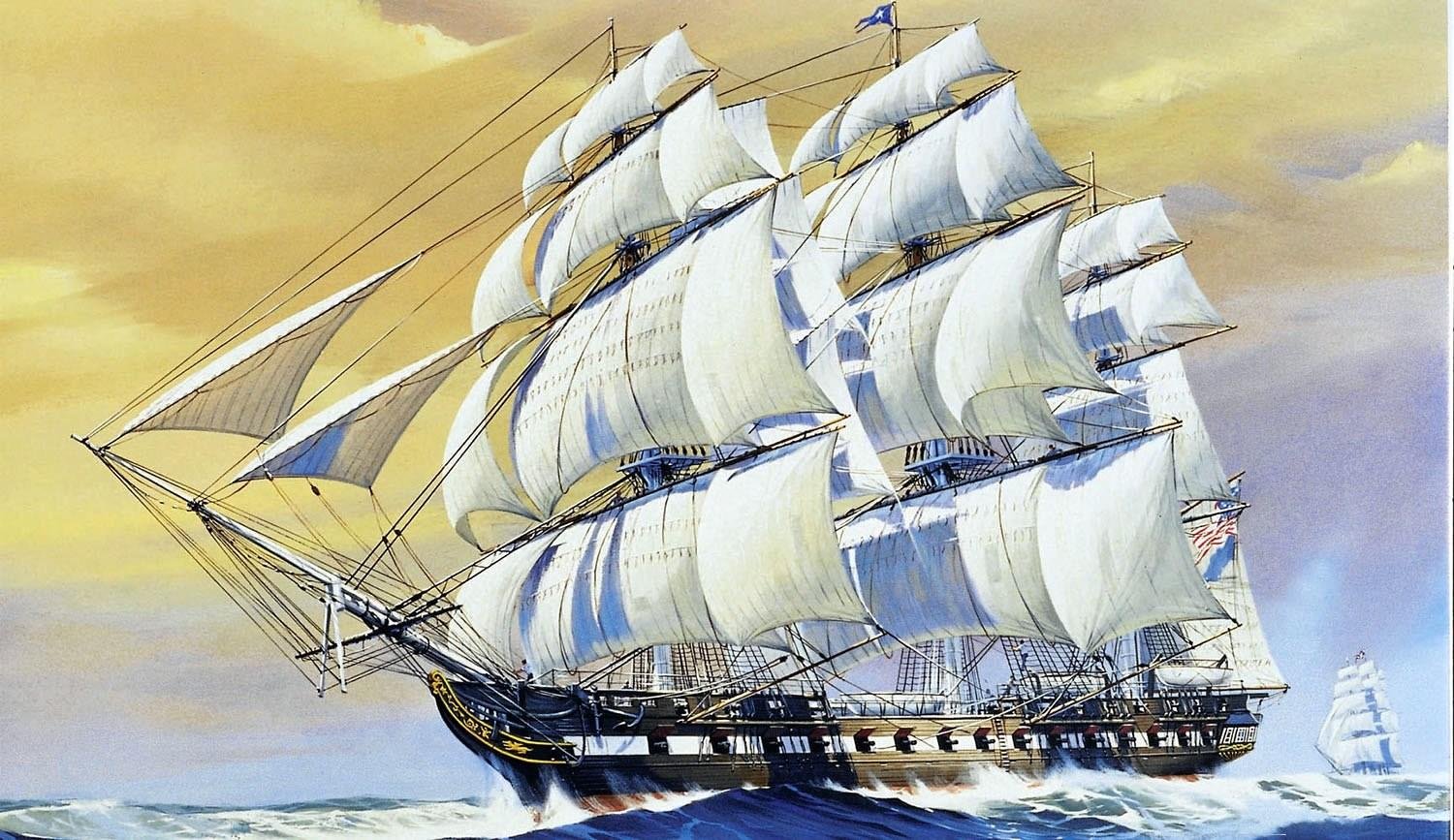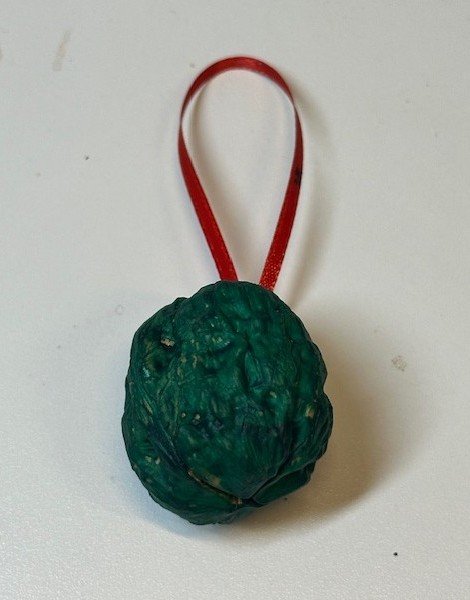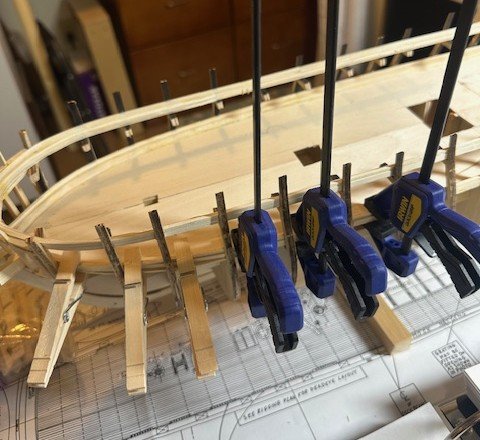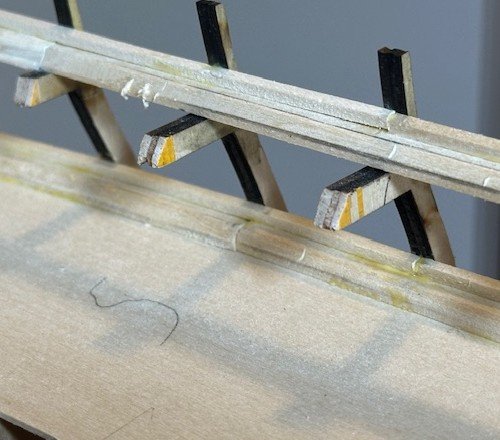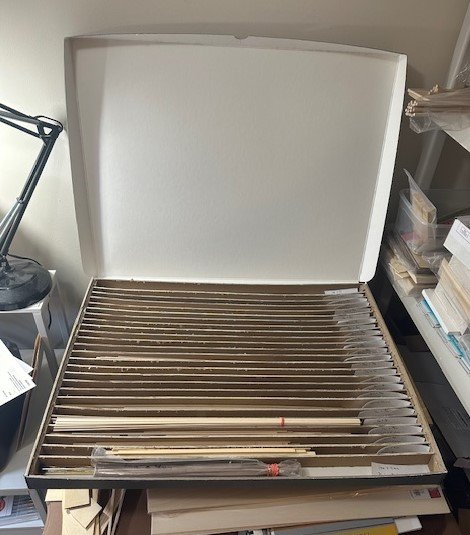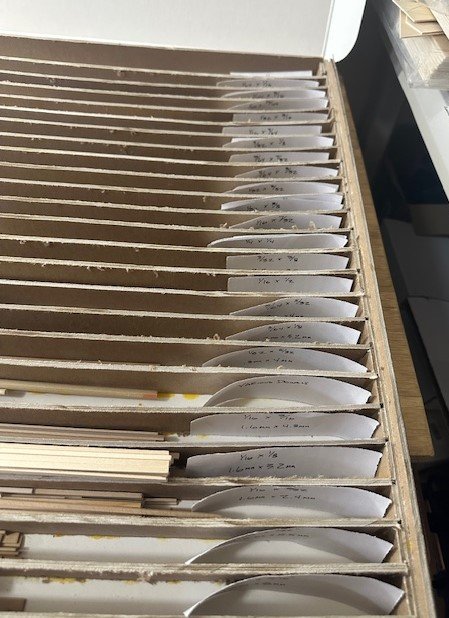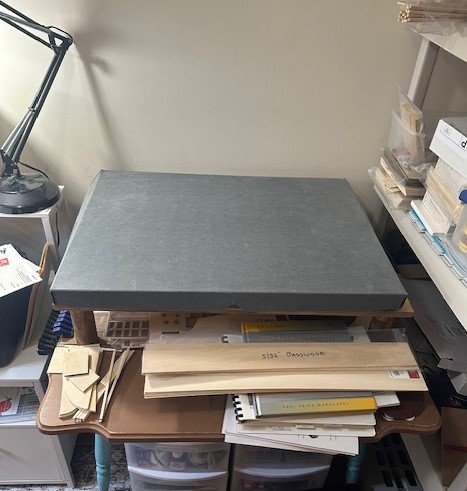-
Posts
1,042 -
Joined
-
Last visited
Content Type
Profiles
Forums
Gallery
Events
Everything posted by GGibson
-

USS Constitution by mtbediz - 1:76
GGibson replied to mtbediz's topic in - Build logs for subjects built 1751 - 1800
At first glance, Jon, it looked to me (both on the real ship and on Mustafa's) as some sort of twisted loops, rather than a simple hook. Excellent work! -

USS Constitution by mtbediz - 1:76
GGibson replied to mtbediz's topic in - Build logs for subjects built 1751 - 1800
Looks great, Mustafa! It all looks perfectly aligned. Is this the rigging I have seen referred to as a "swifter"? -
Nothing really to update on my Constitution build. Since my last post, I have been assessing where the gun deck cannons will be placed in order to prepare for the cannon framework and, as a follow-up to Mustafa's critique after my last update, determining where exactly the new spar deck beams will be placed so I can get the old beam stubs out of the way. What I have been working on, though, diligently over the past week or so is my annual Christmas tree hanging walnuts project. Back when I was a young child, my father would carefully crack open walnuts, dig the walnut and other pieces out of the shell, place money back in the shell, glue it, put a hanging bow on it and paint it so it hung on the tree on Christmas Eve. I carried on that tradition with my children and now with my grandchildren. Every year I come up with some new combination of ribbon and walnut colors in order to identify whose walnuts are whose. Most of the walnuts have some denomination of currency folded and stuffed inside them, but some just have a few pennies in them just to tease them. (Even the ones with currency in them also have a couple of dimes in them so they rattle when shaken.) Here's a picture of one of them. Each of the five grandkids have a dozen walnuts this year, so with five grandkids, that's... 60 walnuts! It's a bit of an organizational challenge as I complete them all (and keep them identified for whose are whose!), but I do enjoy it and the kids all look forward to "Papa's Walnuts"! Here's to a Happy Holiday season to all of my MSW friends!
-

USS Constitution by mtbediz - 1:76
GGibson replied to mtbediz's topic in - Build logs for subjects built 1751 - 1800
Your ship looks pretty much exactly like what I saw in Boston in September, Mustafa! Rigging is looking sharp! Can't wait to see more as your ship gets even taller! 👍🏆 -
I appreciate the feedback, Mustafa! As I was preparing for this Constitution build and researching other completed and ongoing build logs, I was trying to determine the best approach to this kit bashing and the removal of the spar deck beams in order to expose the gun deck. Obviously, in your scratch build, you were able to avoid the spar beam issues and you added the new spar beams in an orderly sequence, after the horizontal, vertical and diagonal knees were created and placed on the ship. The two “bashed kits” that I reviewed that had removed their spar deck beams fairly early in the process and subsequently added at least some version of knees were from Tom (usedtosail) and Jon, and so I’ve been trying to follow their tails as best as I can through their spar beam removal processes. As I said at the time, adding the spar deck waterways when I did added some strength and support to the bulwark extensions. One difference I have noted, though, between what Jon did, as a for-instance, and what I did is that he cut off his spar deck beams right up against the waterways. I had left mine sticking out a bit for now, subject to determining where the new beams would be located. As a part of that new “plan my approach in advance” strategy I am employing, now is the time to make those spar deck beam location determinations, so that the knees locations can also be best planned. And, to your point, Mustafa, regarding gaps in my updates, including too many steps in each update, and not allowing you veterans an opportunity to provide timely advice, I will do better in keeping future updates more concise. Again, I appreciate your input and advice, fellas! Thanks!
-
Hi Mustafa! Thank you so much for peeking in with your advice and recommendations. I cannot adequately express how much veteran advice from gentlemen like you mean to me in this build process. We are so lucky to have you guys around. With that said, yes, my plan is to expose the gun deck similarly to what you and Jon have so successfully done. You had given me the reminder about the spar deck beam replacement concern back in October on Post #73, and I have not forgotten that reminder! When I cut those old beams, I cut them back to a point where, whether new beams are attached back directly to them or if they are just left as stumps because of new beam positioning, the old stump portions would be "hidden" under the spar deck edge decking that will be in place for the carronade guns and carriages. I am wondering now if accurate placement of the gun deck knees (directly under the spar deck) will be affected by any of these stubs. Perhaps those stubs affected will need to be cut back farther against the bulwarks. Since yours was a complete scratch build, of course, you didn't have the old beam stubs to be concerned about. I will, though, look back and see again how Jon handled all of this in his kit-bashing. In your reminder post on Post #73, you provided a build log location on Jon's log where he raised his concerns. Time to go back and study this all in greater detail and, as you stated above, Mustafa, plan my approach in advance! Once again, I appreciate ALL of you gentlemen that preceded us in these early steps!
-
Hey Terry! The Bluenose looks really nice. Very interesting color on the lower hull. I love its uniqueness! And the launch ways looks sharp, as well! I had seriously thought about a launch way for my Bluenose but then bailed and did a standard pedestal base. Now that I see yours, it's tempting to go back and do one for it! 👍🏆
-
Completed a few other things, so another quick update. The gun deck waterways and planksheers placement didn’t take too long to complete. It was pretty much and “rinse & repeat” process from what I had done previously for the spar deck waterways and planksheer. For the gun deck waterways, I did not have any 5/16” x 5/32” strips handy, so that gave me an opportunity to cut a few strips on my Byrnes saw from a 5/32” sheet. I then used the same process I did on the spar deck waterways, trimming a 45-degree bevel into one side 3/32” deep using my disk sander. Longer strips were placed from the stern bulkheads up to Bulkhead F. A curved waterway piece was then measured and cut for the sharper bend from Bulkhead F up to the bow. The planksheer joint was made at Bulkhead G and, again as I did with the spar deck pieces, I was able to bend the forward planksheer strips by simply holding them under running hot water for a minute or so. All in all, no issues, especially since I had done the same process earlier for the spar deck. The closeup pictures of the waterways and planksheers also reminded me that I need to give everything a nice bit of sanding, too, before painting them! I’ve been wavering a bit on what to do next… either the gun port framing on the gun deck or the planking on the gun deck. I believe the gun port framing will be next, though. I also need to do some more work back in the Commodore’s Cabin area, which will affect the planking, as well, so… onward to lots of gun port framing! Appreciate the quick peek, comments, advice and criticism.
-
Your rudder work at the stern looks awesome, Peter! Excellent! And... as we have all said at one time or another on each other's build logs... while we all strive for perfection and see the "little oops" in our own work, no one is going to be taking a magnifying glass to your work once it's completed and in the display case. The picture view you are sharing with us is what everyone will see once completed. I'm not saying don't fix what you are seeing, but... ok, nevermind... we're all going to fix our "little oops", anyways. CARRY ON, SIR! 🤷♂️🤣🏆
-
Peter, in a shipbuilding zoom meeting I participated in yesterday, a gentleman suggested using 3M Marine Adhesive Sealant 5200 for adhering copper plates to the hull of a model ship. It sounds like that would work well with brass to wood, perhaps, as well. Several others chimed in and said they've used it successfully, too. Perhaps worth a go?
-
Well, I completed two of the three steps that I intended. My shipyard work this past month has had its share of interruptions, with a trip to Iowa for one extended weekend plus with the Thanksgiving holiday, but I did get some work done on my Constitution, albeit at my slow and deliberate pace. After making the changes in the main hatch position, I was now ready to secure the false gun deck to the bulkheads before beginning the additional work on the gun deck itself. A fairly easy and straight-forward process of gluing each of the four individual false deck pieces in place and, using some spare square dowels and longer rubber bands to hold the false deck in place while the glue dried, the false deck was secured. The pair of aft hatches that are located on either side of the capstan were the simplest to build, as there was no grating involved. Simply two sets of stairways with the ladders facing athwartship (I learned a new nautical term!). With all of these hatchways, I am using 3/32” x 1/4” basswood stock for the frames. In a previous post, I described how I built the lower ladders that go from the gun deck down to the berth deck. Since these will be difficult to see details, these stairs are simply small blocks glued together in a stairstep fashion. The lower railing stanchions are blackened 0.81mm brass rods. I used a different process this time to blacken the rods. After dipping them in white distilled vinegar to clean them, I painted them with the JAX Pewter Black product using a Q-tip cotton swab, then rinsing in clean tap water. I have been really happy with the results! For these lower “berth deck” level stanchions, I used a spot of CA glue to secure the 0.25mm rope for the rope railing. I am, of course, leaving lengths of railing rope loose at this time to eventually place the gun deck level stanchions at the appropriate time. In my last build log post, I mentioned how I was switching, or pivoting, the position of the main hatch so that the ladders were in a forward/aft direction rather than side/side direction (or athwartship, as I learned a new nautical term!). As others have previously indicated, there are several plan interpretations of how the main hatch looked. One configuration that I recall Jon mentioning is the US Navy’s 1927 restoration work Plan #24423. But… is that the way the main hatch looked back in its 1812-1815 days? The plans from Bluejacket Shipcrafters are presented based on Larry Arnot’s research during this 1812-1815 period. What the heck, let’s use that configuration. They look pretty close to one another. I had also mentioned in my last build log post that I was going to use Mustafa’s process in creating the criss-cross hatch grating work. After that comment, I found some flat pearwood grating strips on Dry-Dock Model’s website. They were advertised as being 1:72 scale, so they are close in scale to our 1:76.8 scale. Their grating slat spaces are only 1mm in size, which is closer than what I was planning on doing on the mill at 1.4mm. A 1mm opening converts at our 1:76.8 scale to just a smidge above 3 inches, which is probably a more accurate hatch grating size, anyways. So, I went with these grating strips. Using the aforementioned Bluejacket plans, I wrote up a sizing plan for my Constitution’s gun deck main hatch, which helped me keep things organized while cutting each of the grating pieces to their accurate size, along with the stairs in each corner. And, of course, I have to include a couple of my magnetic box and Lego building pictures… Although none of these hatches have been firmly secured yet to the false gun deck, I placed them all in position to see how they were going to look. First, a quick peek at how the ladders look under the false gun deck (noted with the drawn red line)… And a shot of the full false gun deck with each hatch in place… A close-up of the forward gun deck hatch… A close-up of the main mid-ship gun deck hatch… And, finally, a close-up of the aft gun deck hatch, where the capstan will be placed in between… I am happy with how the hatches (and gratings) came out on this gun deck. I’ll decide in due time whether to use these same Dry-Dock gratings on the spar deck or attempt to make my own. What I need to work on now, though, are the gun deck waterways. Oh, one more thing. Before it gets too late and I forget, I made the necessary cuts and notches in each of the mast dowels so that they fit properly and snuggly in their respective spots on the gun deck. Of course, once the spar deck is built, we want to be able to slide these masts down into their respective gun deck positions and secure them. The notches done now will assist in that endeavor. Appreciate the peek-ins, the comments, and the criticisms. Thanks for your support.
-

USS Constitution by mtbediz - 1:76
GGibson replied to mtbediz's topic in - Build logs for subjects built 1751 - 1800
Excellent work, Mustafa! Nice use of the jig. What is the distance between upper and lower deadeyes that you were achieving? -
That's the exact brand and Alizarin Crimson Hue color I used on my lower hull, with the Liquitex Basics Acrylic Mars Black as my choice for the black portion. I am not a good spray painter, and these colors brushed on really nice for me. Also, if you haven't already prepared for it, I highly recommend using Tamiya masking tape to help create the sharp lines between colors. Nice hull work on your Bluenose, Terry! Carry on, sir!
-
Have fun with this little boat, Jasennord! It was a nice ship to continue to learn skills on. Although I don't recall the exact issue now, I'd have to look back at my build log to hopefully jog my memory, but be cautious when you get to the point of trimming the transom, as I don't think the kit's measurements were exactly accurate to what you really needed to do. It looks like you have a great start on the planking! Enjoy!
-
And keep reminding yourself... "It's a journey, not a race to finish." Best wishes and have fun!
-

USS Constitution by mtbediz - 1:76
GGibson replied to mtbediz's topic in - Build logs for subjects built 1751 - 1800
Great to see you starting on the rigging, Mustafa! Will be an entertaining and informative following. And I appreciate your decision on the non-sails. I recall you were on the fence as I read your early posts. Not having sails will allow your family and friends to see your magnificent work even clearer. We all aspire to build a "Mustafa-quality" Constitution. Congrats on achieving this crossroad, my friend! -

USS Constitution by mtbediz - 1:76
GGibson replied to mtbediz's topic in - Build logs for subjects built 1751 - 1800
The day that I was there in Boston in September it had rained overnight and was misty that morning, so much of the spar deck details were covered. And I was also unable to get anywhere near the bowsprit area that Jon was requesting, too. There was a port-a-potty in the way! 🤷♂️🤣 -
Thanks, Jon! I've been looking back at your build log multiple times for guidance. Thanks, Peter! This is where I say "hold my beer", though, as I'm confident I'll screw it up somewhere along the way. Thanks, Mustafa! And a great reminder on the wood grain. I thought I had the right size mill bit, but... so it's on order and working on a couple other areas.
About us
Modelshipworld - Advancing Ship Modeling through Research
SSL Secured
Your security is important for us so this Website is SSL-Secured
NRG Mailing Address
Nautical Research Guild
237 South Lincoln Street
Westmont IL, 60559-1917
Model Ship World ® and the MSW logo are Registered Trademarks, and belong to the Nautical Research Guild (United States Patent and Trademark Office: No. 6,929,264 & No. 6,929,274, registered Dec. 20, 2022)
Helpful Links
About the NRG
If you enjoy building ship models that are historically accurate as well as beautiful, then The Nautical Research Guild (NRG) is just right for you.
The Guild is a non-profit educational organization whose mission is to “Advance Ship Modeling Through Research”. We provide support to our members in their efforts to raise the quality of their model ships.
The Nautical Research Guild has published our world-renowned quarterly magazine, The Nautical Research Journal, since 1955. The pages of the Journal are full of articles by accomplished ship modelers who show you how they create those exquisite details on their models, and by maritime historians who show you the correct details to build. The Journal is available in both print and digital editions. Go to the NRG web site (www.thenrg.org) to download a complimentary digital copy of the Journal. The NRG also publishes plan sets, books and compilations of back issues of the Journal and the former Ships in Scale and Model Ship Builder magazines.

